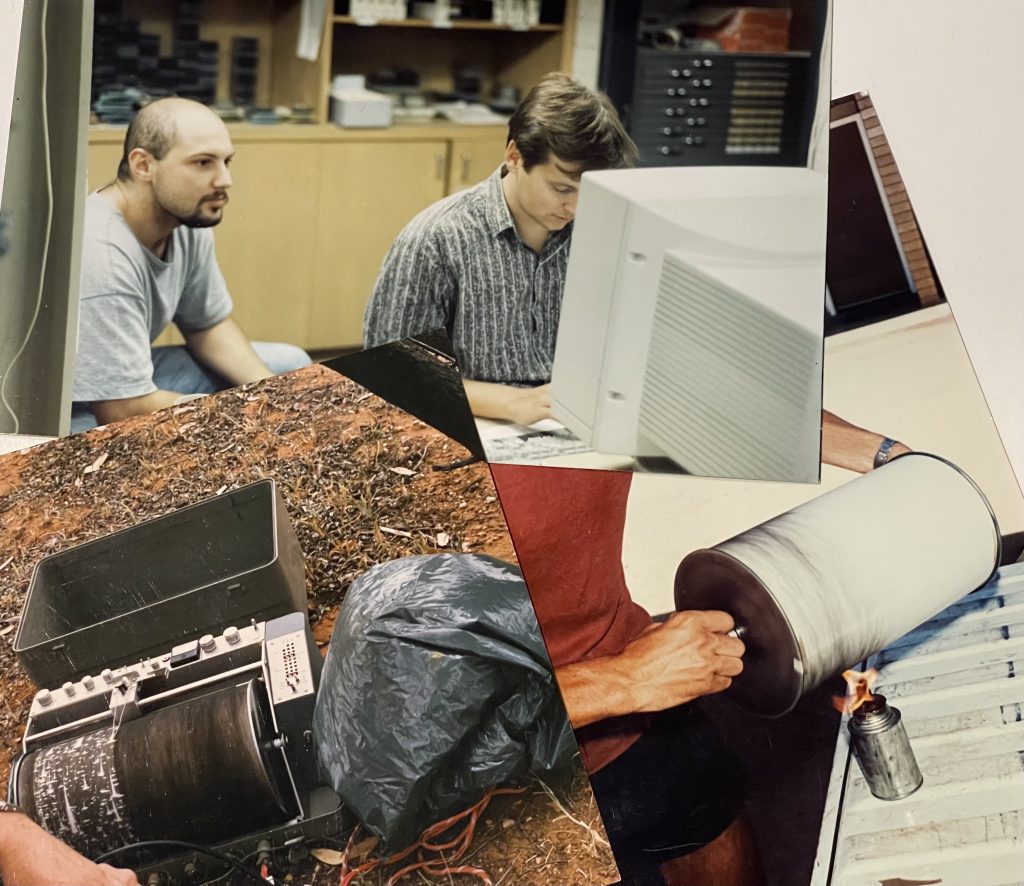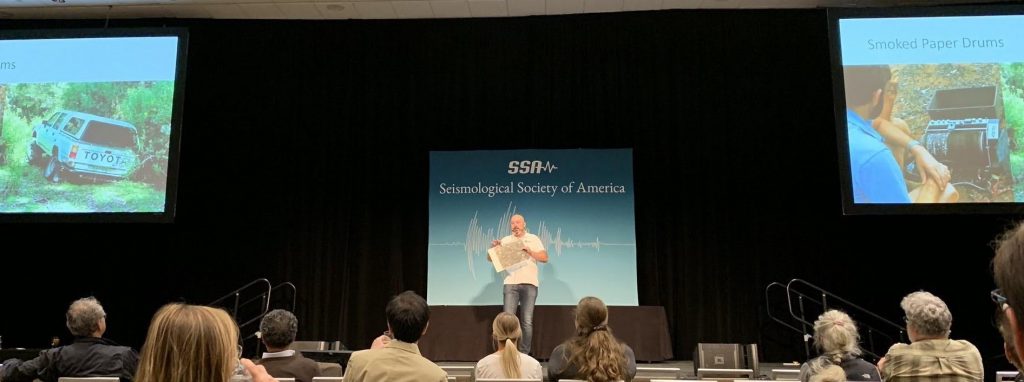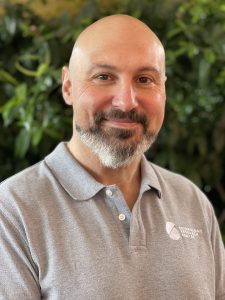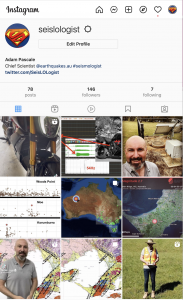Meet the SRC’s Chief Scientist who celebrates 30 years at SRC in 2021. You can find Adam as SeisLOLogist on Twitter, Instagram, and TikTok
Q: When did you start working for the Seismology Research Centre?
A: 18 December 1991. I’d just finished my degree in computer science and got a summer job in the weird earthquake lab in the basement that I didn’t even realise existed during my 3 years at the university. The plan was just to keep busy until I worked out what I really wanted to do with my life. I haven’t had any better offers yet!
Q: What was your first role at SRC, what do you do now, and how has it changed over time?
A: I was originally employed to change the paper records on the analogue drum recorders, a task that had to be performed every second day (including weekends). We would spin a drum wrapped in glossy paper over a smoky diesel flame, leaving a thin layer of soot on the paper. The diamond-tipped stylus of the recorder would scratch away the smoke to reveal the paper and a white trace of ground motion. Then we’d very carefully remove the paper and gently run it through a bath of spirits and shellac (a resin secreted by the female lac bug!) to seal the record, which could be analysed when it dried a few hours later.
I soon progressed to data analysis and field work to collecting analogue and digital data from remote stations. Most digital data at the time was recorded on cassette tapes. They needed to be played back into a computer in the office at a variable speed depending on the ambient temperature at the station at the time it was triggered (because the recorder’s cassette spindle motor speed varied slightly with temperature).

(bottom right) Smoking a paper drum record over a diesel flame
(bottom left) Recording hundreds of aftershocks on a smoked paper drum recorder
Data collection and processing is by far the biggest change in my time at SRC. We’ve gone from spending well over 50% of our time collecting and preparing the data so that it could be analysed some hours, days or weeks later; to having the data presented to us in real time and having the preliminary location and magnitude of an earthquake calculated within minutes of its occurrence.
My role has changed a lot over the last 30 years. I have overseen operations of the SRC for almost 20 years, and am now the co-CEO of the SRC’s parent company, ESS Earth Sciences. My current responsibilities are hugely varied, but I still have a core interest in earthquakes and seismology.

Q: How did you become interested in seismology?
A: For many years seismology was just a job that I was not particularly passionate about. It wasn’t until I got involved in the design of the tools for earthquake data acquisition and processing that I found my niche. Having used clunky text-based tools for years I saw an opportunity to improve their practical usability for seismologists who have to do this sort of thing on a daily basis.
I now spend part of my time designing our earthquake recording systems and data processing & analysis software, leaving all of the clever implementation to the wonderful team of software and electronics engineers that I work with.
Q: What do you like most about your job?
A: Creating new products provides me with the most satisfaction, particularly when I know that my simplified designs are going to enable people to access knowledge about earthquakes that might otherwise have been beyond their grasp. I also love the variety of work, particularly now as I am involved with different environmental monitoring technology in the other divisions of ESS Earth Sciences.
Networking with other scientists in recent years has also sparked an interest in science communication, something I have endeavoured to explore using social media. Effectively explaining complex science in simple terms without diminishing the value of the work is a difficult balance, but rewarding when your audience has that “a-ha” moment.
Q: What do you find most challenging?
A: Being a scientist in a private company can sometimes be frustrating as I can’t always undertake a project purely for the sake of gaining or exploring knowledge, particularly if there is no obvious commercial benefit. I am also aware that this commercial conflict of interest may undermine my perceived impartiality as a scientist, so communicating to colleagues that I can keep these imperatives separate is an ongoing challenge.
Q: If you had to work in another field, what would you want to do?
A: I’d love to be able to design and build other types of technology, perhaps designing vehicles or personal electronics. Tools for designing and prototyping with 3D printing is putting a lot of this within reach, but I would love to be able to learn traditional metal and wood working skills – something for my retirement, perhaps. At the moment my creations are limited to weekend baking, something I really enjoy, but not a job my waistline could sustain as a full time career!
Q: What has been your most memorable career moment?

A: A definite highlight was the recent Mw5.9 Woods Point earthquake, the largest in our state’s recorded history, and the earthquake felt by the most people in Australia ever. The earthquake struck a 9:15am while I was working from home during the pandemic, and I felt it along with millions of other people spread over six states and territories. The ensuing whirlwind of information analysis and dissemination to emergency managers, the media and the public was a blur that continued for some weeks, but it was very satisfying to be able to communicate complex information to an audience that was generally unfamiliar with the concept of earthquakes in Australia.
Being able to travel internationally, mostly throughout Southeast Asia and India, to train junior seismologists in earthquake monitoring and data processing has also been very rewarding. I look forward to being able to travel again in 2022.
Q: What advice would you give to a student who wants a job like yours?
A: Find an area where you can do something better than most people, explore it, and build on it. Perform every task you are given with as much effort as you can muster. Deep down you know the right thing to do, so do it well and your efforts will get noticed (even though it doesn’t always feel like it). You may not progress through life as quickly as you like, but take a long term view and you will eventually find and fill a niche that will allow you to have a solid, stable career. Never stop learning, keep across emerging trends and technology, respect those around you, and call out those who don’t respect others. Share your knowledge, and help the work of others to be better recognised, even if it puts their career ahead of yours. Just be a good person.


